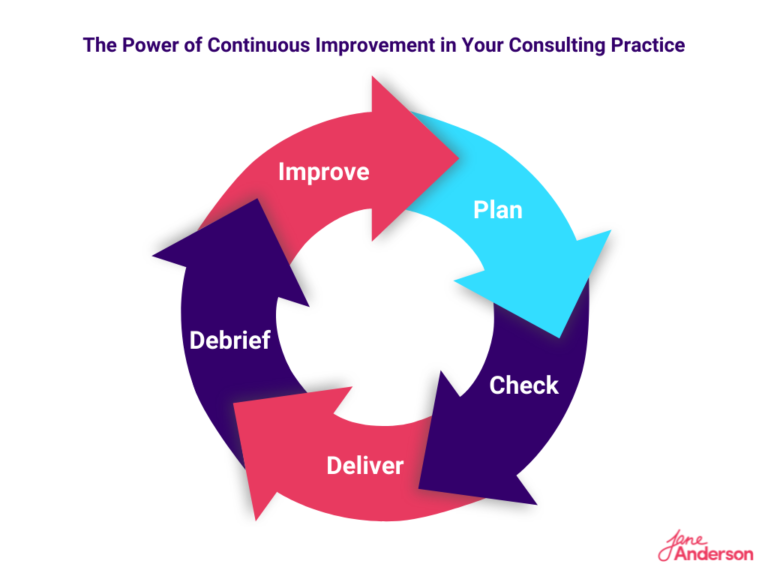The importance of Continuous Improvement in Your Business or Consulting Practice
It’s vital that we recognise the importance of continuous improvement in business and consulting for all thought leaders, speakers and experts. Here’s how to get started.
The idea of continuous improvement is not one that’s often talked about in the thought leader or expert industry, and yet it’s a highly developed part of the corporate industry. In fact, the idea of a continuous improvement process within the corporate arena was originally developed as a management methodology by Toyota in Japan. Known as kaizen, it is the ‘quest for continuous improvement’ and is one of the core principles of The Toyota Production System.
In practice, kaizen is about making incremental improvements over time, as opposed to breakthrough moments. It allows you to streamline work and reduce waste no matter what your business is without having to rely on moments of brilliance or inspiration. In some ways, it’s like an elite athlete who simply practices and practices and practices, rather than one who relies solely on their talent.
The Importance of the Continuous Improvement Process in Business and Consulting
Having worked with over 27 different industries in implementing productivity, processes and systems, there's one industry that always stands out to me in the continuous improvement process – airlines. When I worked with Virgin Australia, I worked closely with the head of flight operations and his team, who were all senior pilots. They had an excellent strategy for ensuring they were continuously improving – plan, check, deliver, debrief and improve.
Plan, Check, Deliver, Debrief and Improve
First, they would identify the actual goal of the particular program or process. Then they would plan for the steps that they would need to follow in order to deliver the results. Next, they would check the process to ensure its efficacy before moving onto their delivery of the process. This was helped by their obsession with checklists. They had checklists for checklists and they followed every single thing on that list in order to make sure that the process – or the flight – would run absolutely smoothly, with no errors, and that every step was captured and accomplished.
Once they delivered that process, they didn’t just high five and start again. They took the time to debrief. They came back together, discussed how it went, what worked and what didn’t and, importantly, what they needed to update for next time. Did the process need work? If it didn’t what was the problem? Was it the templates? Was it a certain step? They identified the areas that needed improvements and then they implemented those improvements. And then they started the cycle again.
Implementing the Virgin Approach
The Virgin approach, and the idea of kaizen or continuous improvement generally, is something that we can and should be, implementing in our own practices. Of course, if we’re still in the process of building our practices, this can look a little bit different. After all, Virgin and Toyota are both established businesses. So, when they make improvements, they are doing so on firmly established practices. On the other hand, when we’re building a practice, there can be a lot of pressure because we’re creating a process for things that aren't yet in existence.
Even so, using the tool of continuous improvement can help you get there. You make your plan, you deliver, you debrief and then you improve. Constantly checking and improving and then repeating the cycle will help you both build out your practice and improve those processes as you go.
Improving is Better than Perfection
As the famous American author, Mark Twain said, ‘Continuous improvement is better than delayed perfection’. Many of us delay our processes and delivery or stop trying to execute our plans simply because they’re not yet perfect. But in order to become perfect – or better yet, in order to become exceptional – we need to become those people who obsess about our continuous improvement process. We need to recognise the importance of continuous improvement in business and consulting. And we need to stop getting bogged down in blocks or in things that are holding us back from progressing.
Doing More with Less
One of the biggest benefits of continuous improvement is that it helps you to do more with less. Kaizen is a productivity process that can be accomplished (and accomplished well) without sophisticated techniques or technology and with relatively little or no expense. You’re just putting in the analytical work every day.
And as you improve, your work and the delivery of your work improves, you can help more clients and meet more demand with the same output. Research shows that Toyota made a savings of US$3.33 million by not having to invest in new facilities or increase the number of installers needed to meet the increase in demand they were facing. Your savings might not be in the millions, but this process will help you meet your own demands and provide exceptional service to clients and in your delivery.
Questions for Continuous Improvement in Your Practice
It’s vital that we recognise the importance of continuous improvement in business and consulting for all thought leaders, speakers and experts. To get started on a continuous improvement process, ask yourself:
1. Are you just starting out or are you an already established practice?
2. Have you implemented any steps to improve your processes and delivery or to establish your processes and delivery?
3. What checklists can you put into place to ensure that you’re implementing the five steps of plan, check, deliver, debrief and improve?
I’d love to hear your thoughts…

